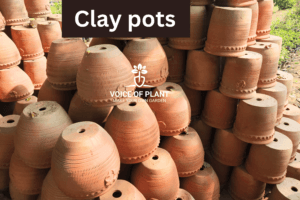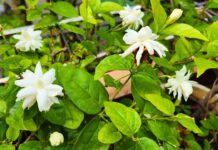Jasmine plant care: Jasmine, known by various names such as Jai, Jui, Chameli, Sayali, Kunda, Mallika, or Mogra, is an alluring and aromatic flowering plant that comes in different varieties, including single petal, double petal, and plants with round or thin leaves.

The lush greenery of Jasmine (Mogra) not only enhances the beauty of the garden but also contributes to increased oxygen levels in the home. With both spiritual and medicinal significance, this versatile plant plays a vital role in various aspects of daily life.
The exquisite pearl-white flowers of Jasmine are commonly used to create appealing hair decorations known as Gajras.

Moreover, these ambrosial flowers find applications in the manufacturing of perfumes, scented waters, aroma sticks, room fresheners, hair oil, and various cosmetic products.
While caring for this plant may seem a bit different due to its unique qualities, it is surprisingly easy and simple to maintain.
It is important to note that each plant has distinct behaviors and needs, and Jasmine (Mogra) is no exception. Here are some key facts that can guide you in successfully growing Jasmine (Mogra) at home:
Jasmine Plant Care Tips
1. Best Season for Jasmine (Mogra) plant
Jasmine, a hardy and perennial summer plant, blooms continuously in regions where the warmth of the sun prevails.
- Jasmine plant may slow down during the winter season but can be revitalized through hard pruning in the spring season.

While new or immature plants might face stress in extreme winters and scorching summers, old and mature plants tend to bloom well even in winter. With proper care, this plant can bloom heartily for years in every season.
2. Pot Size & type for Jasmine plant
For Jasmine, a 12-inch pot is ideal, although an 8 or 10-inch pot can also be used with caution to avoid root binding.

- Beginners may prefer clay pots, while experienced gardeners can choose any type.

Jasmine can be grown as shrubs or vines.
- For vine growth, provide supports for the vine to climb.
- For shrubs, maintain a normal plant shape by pruning extra branches.
3. Soil Mixture for Jasmine plant

Ensure that the soil for the Jasmine (Mogra) plant is not too tight. Follow the ingredient ratios below for a well-balanced soil mixture:
- Normal soil – Use garden or local soil as the base.
- Compost (slightly more than half the quantity of soil) – To increase the organic matter in the soil.
- Construction Sand (half the quantity of compost) – To improve the drainage system in the soil.
- Coco peat (same quantity as sand) – To retain moisture in the soil.
- Mustard Cake Powder (a handful) – To improve soil structure, enhancing microbial activity, and promoting healthy root development in plants.
- Neem Cake Powder (a handful) – For pest prevention in the soil.
- Optional: Fungicide or Cinnamon powder – To prevent fungal attacks in the soil.

The increased quantity of compost, sand, and coco peat accommodates the plant’s year-round blooming and higher nutrient requirements. Blend all the ingredients in a container to prepare the mixture.
4. Location of the Jasmine plant
Jasmine (Mogra) plant thrives outdoors and requires sunlight and air.
- Avoid exposing the plant to scorching heat; instead, place it in early morning or evening sunlight.
- In summer, protect the plant from intense sunlight (12 noon to 4 pm) by using a green net or positioning it behind other pots.
- A minimum of 3 hours of sunlight is essential but should not be too strong.
5. Watering tips to Jasmine plant

Maintain soil moisture by watering before it dries out. Water the plant in intervals until water drains from the bottom hole of the pot.
6. Pruning of Jasmine plant
Pruning is crucial for Jasmine (Mogra) plant, and the process may vary based on the plant’s condition and the current season.

- After winter, hard pruning is needed to encourage flower growth.

- Buds usually form at the tips of branches; remove branches with blossomed buds or flowers to stimulate new growth.
- Weekly pruning is recommended for abundant flowers.
- Regular pruning maintains plant density and shape, allowing careful monitoring.
This was all about “How to Grow and Care Jasmine plant at home”. Hope you liked this article.
Happy Gardening!

















